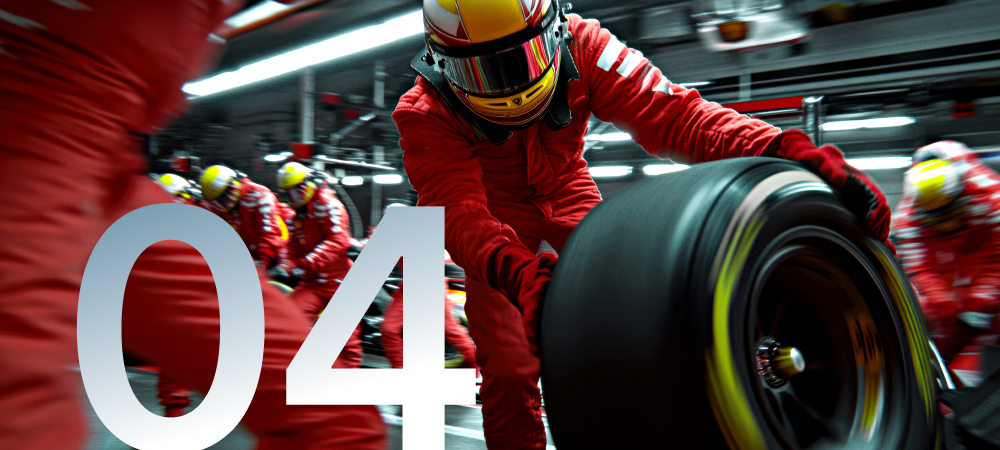Don’t let outdated strategies slow you down.
Talk to our experts and discover how to stay ahead. Contact us today.
If your inbox is anything like mine, it’s flooded with countless articles and reports on artificial intelligence (AI), machine learning (ML), headless architecture, personalization, digital transformation, and other cutting-edge technologies. While these advancements hold immense promise, many organizations still perceive technology as a silver bullet rather than a tool to drive meaningful transformation.
This isn’t to downplay the power of technology—far from it. Technology is a critical enabler, but its true potential is realized when integrated into a broader strategy that dares to reimagine the very definition of your digital ecosystem.
It’s no longer just an application or a website. Rather, it’s a dynamic hub that serves as your brand’s front door, your best store, and your most effective salesperson.
As digital experiences become ever more realistic and a manifestation of your physical presence, you must challenge conventional, outdated models to connect with customers on a deeper level, go beyond the ordinary, and deliver exponential business value.
To help you stand out in an increasingly crowded and competitive market, here are key imperatives to prioritize in 2025 or else risk becoming irrelevant to your customers.

Imagine attending a dinner party and meeting a prospective customer. If you approached the conversation like most websites do today—impersonal, self-focused, and transactional—you likely wouldn’t make a lasting impression. Instead, you’d take the time to understand their pain points, explain how your company is uniquely positioned to help, and genuinely show interest in them.
Too often, digital experiences fall short, offering only a thin veneer of customer-first engagement while prioritizing business objectives over true value creation. Meanwhile, customer expectations have never been higher. A staggering 80% of consumers (Salesforce) now rate their experience as equally important—if not more so—than the products or services you provide. Additionally, 73% of customers (Forbes) expect businesses to anticipate and understand their needs.
To meet these rising expectations, your digital experience priorities must shift. It’s no longer about showcasing features or ticking boxes. Instead, it’s about solving your customers’ problems and delivering clear, tangible benefits that resonate with their needs.

Storyselling bridges the gap between storytelling and conversion optimization, proving that the two can work hand in hand. Unfortunately, many companies take a heavy-handed approach, bombarding customers with promotions, offers, or a hodgepodge of products or services, hoping something resonates. Others overly focus on the final step—the transaction—obsessing over CTA placement, required sign-up form fields, and/or checkout sequences.
Storyselling prioritizes bringing your brand to life online, creating memorable and inspiring experiences that draw customers in. By making the journey more personal and relevant earlier in the purchase process, you build trust and credibility, making the transaction stage a natural conclusion rather than a hard sell. Done right, storyselling delivers results—brands leveraging effective storytelling see conversion rates increase by up to 30% (Leapmesh).

How many times have you been told to follow “best practices”? The problem is, many of these so-called standards are outdated. Mega dropdowns, hamburger menus, oversized headers and footers, intrusive search overlays, rigid design patterns, and cumbersome checkout processes haven’t evolved in two decades. While information architecture is still crucial to User Experience Design, it must evolve to keep up with shifting user behaviors, changing business needs, and emerging technologies.
AI has been a major driver of this evolution, enabling personalization at scale, conversational interfaces, and predictive data modeling. Traditional approaches, which require users to drilldown through a site, need to be flipped to serve-up contextually relevant information. This can be achieved with simpler, more adaptive components that dynamically respond to user behavior. The result? A more intuitive, engaging experience that’s personalized, conversational, and focused on building relationships.

Being a guide means designing an experience that supports customers every step of the way, providing the tools, resources, and insights they need to stay engaged and make confident decisions. Outdated tactics—such as bolted-on chat windows, generic search bars, cluttered drop-down filters, excessive carousels, and overwhelming popups—create unnecessary friction and confusion, ultimately driving higher user abandonment.
Instead, companies must seamlessly integrate self-service features that deliver speed, convenience, and control. With 73% of customers preferring a do-it-yourself approach (Forbes), offering interactive, intuitive tools can encourage deeper engagement and trust, empowering your customers to actively navigate their journey while feeling supported and in control. In exchange, the customer will be more willing to engage and share valuable insights about themselves.

The rush to leverage AI is reminiscent of the frenzied Cabbage Patch Doll craze of the ‘80s, with companies scrambling to stay relevant and tap into AI’s technological power at lightning speed. While the excitement is justified, most gravitate towards how AI benefits the company—streamlining operations, automating repetitive tasks, and boosting productivity. While AI as an accelerant is valuable, companies must prioritize how AI can directly benefit the customer.
AI is no longer just a tool for internal efficiency; it’s becoming the new user interface that bridges the conversation between businesses and customers. AI-powered interfaces are transforming interactions, offering hyper-personalization, context-aware features, multimodal capabilities, and seamless experiences that adapt to user preferences. Instead of viewing AI as merely an extension of current technology paradigms, harness its ability to make technology seem more human. There’s an irony here, but nothing artificial about AI’s ability to foster real, meaningful connections.

How long does it take for you or your team to update your current site? If the answer is days or even weeks, it’s not an update—it’s an outdate. Unfortunately, you’re not alone. Many companies continue to grapple with challenges like siloed data and content models, restrictive licensing agreements, clunky update processes, and limited integration capabilities—all hallmarks of legacy monolithic tech stacks.
The good news? In the time it takes to read this article, you could have updated your site with a headless CMS, providing highly personalized content across multiple channels informed by aggregated data without any backend development. To remain competitive, businesses must embrace speed as a necessity—not a luxury. The relentless pace of technological change and rising customer expectations demand faster, more adaptive digital experiences that only headless CMS’ can offer.
Here’s the reality: you’ve got 50 milliseconds (0.05 seconds) for a user to form an opinion about your company and whether they’ll stay or leave your site. If your experience isn’t fast and seamless, they’ll move on. Time’s ticking—don’t let outdated systems prevent you from making a new customer.
More than 80% of customers engage with a company online before any other interaction (Gartner) yet many businesses still allocate a disproportionate share of their budget to their physical presence over their digital one. It’s time to shift the mindset—your digital ecosystem isn’t just an expense; it’s a critical investment. Consider this: nearly 97% of customers say a website influences their purchasing decisions (HubSpot), and over 90% expect seamless interactions across all channels (Harvard Business Review).
You only get one chance to make a lasting first impression. Make 2025 the year your digital ecosystem works to its full potential with these key imperatives. You can’t afford to wait any longer.
Talk to our experts and discover how to stay ahead. Contact us today.